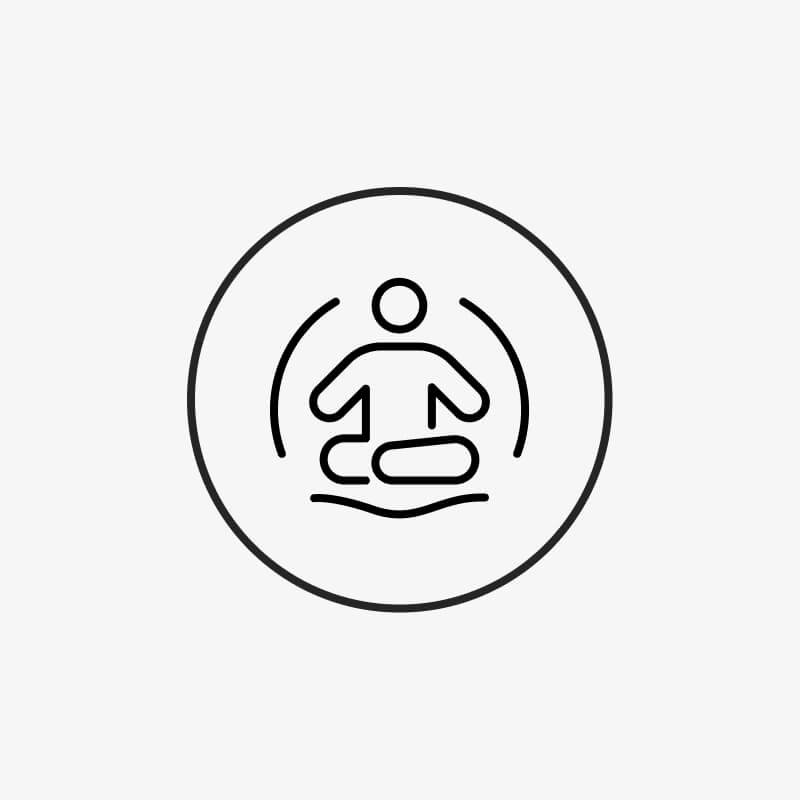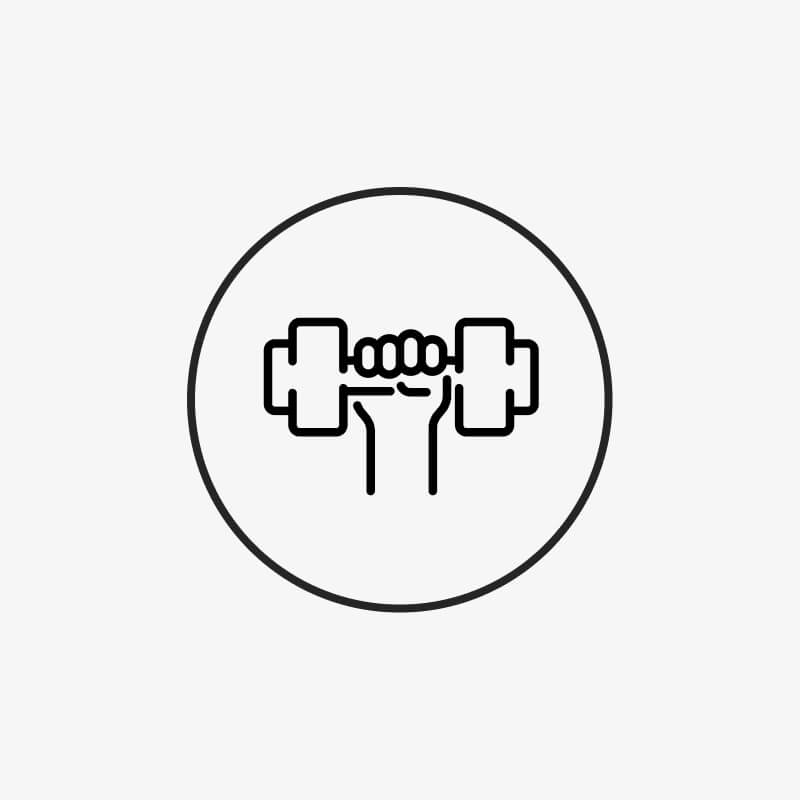To have superpowers, to float through the air, walk on water, or do other completely crazy things... Not possible? It's possible!
Lucid dreams make everything possible that seems impossible to us in everyday life. Our brains harbor unimagined capacities that gather dust. Researchers have now discovered that they can be easily activated!
Table of contents
1. Lucid dreaming – what is it anyway?
Have you ever wondered what lucid dreaming actually is? And what are the benefits of lucid dreaming? We'll give you the answers and show you ways to optimize your performance. With a little practice and outside help, doors to another world will open.
A lucid dream, also known as a lucid dream, is a dream in which the dreamer is aware that they are dreaming. The boundary between waking and dreaming disappears; what is dreamed seems completely clear and real, and the dreamer can even actively influence their dreams . In psychotherapy, intensive study of one's own dreams is used, for example, to combat trauma or recurring nightmares .
Three important factors define lucid dreaming:
- The dreamer can consciously influence the dream events.
- He knows full well that he is asleep and in a dream.
- After waking up, he can remember the dream.
Lucid dreamers can consciously control their lucid dreams and create the world as they see fit. This not only sounds like great fun , but it also has a positive effect on creativity and performance .
You may be familiar with the film "Inception" starring Leonardo DiCaprio. It's about deliberately influencing other people's dreams. But while Hollywood is already thinking a step further, you can start actively experiencing your own dreams and take your brainpower to a new level.
Take-Home Message #1: Lucid dreams are lucid dreams in which the dreamer is aware that they are dreaming. They can even influence what they dream.
BRAINEFFECT HACK : Deep sleep is essential for lucid dreaming. Our SLEEP SPRAY with melatonin helps you fall asleep more easily so you can process the stresses of the day in peace.
2. Who can lucid dream?
If you rarely dream or have trouble remembering the content of your dreams, that doesn't mean you can't learn the skill. Studies have shown that with the right technique, even people who had never been able to remember their dreams before have been able to lucid dream.
The fact is that every person dreams about five to six times per night during the REM phase, whether consciously or unconsciously. A British study even shows that more than half of all adults have had a lucid dream at least once in their lives. About a quarter of all people even have lucid dreams once a month. [1]
3. How to learn lucid dreaming
Experiencing lucid dreams is an ability that everyone possesses. However, only a few are able to experience their dreams consciously. Such people are called " oneironauts ," and according to the word's origin, they navigate through their dreams like sailors. For everyone else, an enormous amount of brain potential remains untapped. Why give away something you can use excellently for self-improvement ?
These days, lucid dreaming is no longer just a figment of the imagination of esotericists, but a tangible and scientifically proven fact. The so-called MILD method (Mnemonic Induction of Lucid Dreams) trains the brain to recall dreams. There are a few exercises you can use to prepare for this new experience:
1. Keep a dream diary
A first step to immersing yourself in the world of lucid dreaming is keeping a dream journal. You record everything you can remember, day after day, immediately after waking up. In the evening, before going to sleep, you read through your notes again, slowly preparing your brain for dream processing.
At first, your memories will probably be quite vague, but over time, you'll retain more and more details from your dreams. Your dream memory will be trained, and your awareness of lucid dreaming will be heightened.
2. Effective sleep mantra
American psychologist Stephen LaBerge discovered a particularly effective method for learning lucid dreaming back in the 1980s. His test subjects were asked to repeatedly recall the following sentence before falling asleep: "The next time I dream, I will remember that I am dreaming." His findings made him a pioneer in lucid dreaming. He has published fascinating works such as "Dream What You Want to Dream - The Art of Lucid Dreaming." [2]
3. Reality Checks
To be aware that you're dreaming, you should perform a reality check. This allows you to check during the deep sleep phase whether you are actually dreaming. This check must be practiced beforehand while awake and should represent a surprising moment, for example, by defying the laws of physics.
In the aforementioned film "Inception," it's a spinning top that spins endlessly in dreams, but falls over after a few spins in reality. A popular exercise for beginners is holding your nose. If you unexpectedly continue breathing in your dream, you know you're in a dream and not in reality.
4. Nutrition and supplements for reinforcement
People who eat healthily and mindfully generally sleep better. A balanced hormone balance is essential for rest at night. An important neurotransmitter in this process is melatonin . This hormone is produced in the pineal gland from serotonin and is partly responsible for regulating the body's day-wake rhythm.
If melatonin levels are too low, sleep problems can occur. To compensate for this deficiency, dietary supplements such as BRAINEFFECT SLEEP with melatonin are suitable. Lemon balm and passionflower can also promote sleep. Only those who get sufficient and restful sleep can fully realize their potential.
Take-Home Message #2: There are a few simple methods you can use to focus your awareness on your dreams, such as keeping a dream journal, using a sleep mantra, doing reality checks, and optimizing your diet.
BRAINEFFECT HACK : SLEEP contains 0.5 g of melatonin per capsule and helps you fall asleep faster.
4. Various lucid dreaming techniques
Anyone who delves deeper into the topic of lucid dreaming will find some abbreviations unavoidable:
- DILD Method : With the Dream Induced Lucid Dream Method, or DILD for short, the dreamer becomes aware that they are dreaming in the middle of the dream. From then on, they can influence what they dream.
- WILD Method: The WILD method (Wake Initiated Lucid Dream) is for true professionals. It involves the dreamer transitioning directly from the waking state into lucid dreaming. The body is tricked into believing you are in deep sleep, while your consciousness is in the here and now. Similar to meditation, your body must be completely relaxed, but your mind must remain awake.
- WBTB Method: With the Waking Back to Bed Technique, or WBTB for short, you set your alarm for about four to five hours after falling asleep. Then you stay awake for about half an hour and perform reality checks several times. Before you lie down again and go back to sleep, you repeat your mantra to yourself: "I'm about to realize I'm dreaming" or "I'm going to have a lucid dream." This trains your dream awareness, and you'll soon notice that your dreams are easier to remember.
Australian researchers at the University of Adelaide have now demonstrated how lucid dreaming can be learned in a two-week experiment with 169 test subjects. During the first week, all participants were asked to keep a diary of their sleep.
In the second week, three groups were formed. The first practiced reality checks, the second was also asked to perform the WBTB method, and the third group practiced all three techniques. The third group, which practiced all techniques, made the greatest progress in lucid dreaming. [3]
Take-Home Message #3: It's scientifically proven: Anyone can lucid dream with the right method. It works best with a combination of dream journaling, reality checks, and WBTB.
5. Lucid dreaming boosts performance
The researchers were able to refute the fear that lucid dreaming negatively impacts recovery during sleep. Quite the opposite: The test subjects who lucid dreamed felt fitter, more alert, and more rested the next morning . This is why learning this dream technique is so popular among biohackers .
A good night's sleep boosts daytime performance . A well-rested person automatically increases their ability to concentrate . Furthermore, they can subconsciously unleash creative potential or even—with targeted practice—train mental or physical skills that can be used in real life.
6. Use more potential through lucid dreaming
Of course, anyone can use their lucid dreams as a playground to feel like Superman and have fun. But why let the potential go to waste? With a lot of practice and discipline, lucid dreams can actually serve as a physical and mental workout .
Do you have to give a presentation to a large audience ? Then go through it in detail in your dream . This can simultaneously build your self-confidence and identify your strengths and weaknesses. Are you often plagued by nightmares? Then face your fear in your dream and turn it into something funny. This way, you can also demonstrate more strength in everyday life.
Lucid dreams also offer an incredible opportunity for training body movements and dexterity . Sports scientist Daniel Erlacher conducted various studies for his doctoral thesis in 2005 to test the connection between lucid dreams and motor skills.
The participants were asked to practice dropping a 10-cent coin into a coffee cup from a distance of three meters in a dream. The success rate of the lucid dreamers actually increased. However, the rate of those who were unable to practice in a dream decreased. [4]
In another experiment, he had athletes perform squats while sleeping. Their eye movements were observed in the sleep laboratory. During the REM phase, which is characterized by uncontrolled, rapid movements, the test subjects were asked to move their eyes back and forth in a controlled manner as a sign of lucid dreaming. In fact, an increased respiratory rate was measured at the same time, proving that the subjects were physically active during sleep. [4]
Take-Home Message #4: With discipline and practice, you can utilize your potential even more through lucid dreaming, both physically and mentally.
7. Well-known personalities are already using the potential
If you think lucid dreaming for self-improvement is a fad, here's a surprise: For centuries, famous people have used this ability to improve their skills. For example, Mozart composed entire symphonies in his sleep, and Albert Einstein conceived the idea for the theory of relativity in his dreams.
Even today, many artists draw creative ideas from their lucid dreams. Paul McCartney claims to have dreamed up "Yesterday," and James Cameron came up with "Avatar" in his sleep.
BRAINEFFECT HACK : To help you fall asleep faster and enjoy a longer night, we developed our SLEEP SPRAY with melatonin. Simply take it shortly before bedtime and drift off to dreamland.
8. Conclusion
Lucid dreams are dreams in which you are aware that you are dreaming. Anyone can learn lucid dreaming with the help of various techniques. Through lucid dreaming, you can also improve your performance during the day, for example, by facing your fears during your dream or practicing things that are still difficult for you in real life.
9. Sources
[1] https://www.ncbi.nlm.nih.gov/pubmed/27337287
[2] http://www.lucidity.com/LucidDreamingFAQ2.html
[3] http://psycnet.apa.org/doiLanding
[4] archiv.ub.uni-heidelberg.de/volltextserver/5896/1/Doktorarbeit_EndversionUB_2seitig.pdf
{{widget type="egproducts/list_featured" template="elegento/products/listslider.phtml"}}














